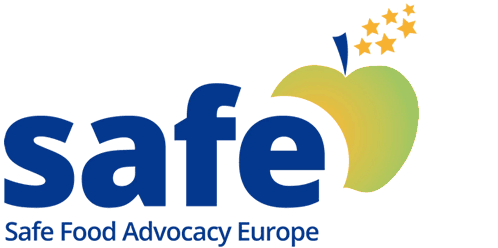Acrylamide
13 June 2024
SAFE launched a campaign on acrylamide, a chemical compound that is formed during most high-temperature cooking processes, and calls for urgent action on limiting the substance in food
Acrylamide is a chemical compound that is formed during most high-temperature cooking processes. It is naturally present in many everyday food products. Most industrial and commercial cooking methods can cause acrylamide formation (frying, roasting, baking). Cooking at home may also lead to the formation of this compound. Acrylamide is generated by a chemical reaction, i.e. heat-induced (mainly above 120°C) at low humidity, which transforms the sugar and amino acids naturally present in starchy food products. This reaction, known as the Maillard Reaction, enhances the taste of the cooked item, while being also responsible for the brownish colour it often gives to food. The level of acrylamide of a given product is thus linked to how it was cooked and to its basic ingredients but is also notably influenced by storage conditions. It is important to be aware that acrylamide is mainly found in fried products.
In June 2015 the European Food Safety Authority (EFSA) published its first full risk assessment concerning the acrylamide in food. EFSA experts confirm that acrylamide in food can increase cancer risks for consumers of all age and consider it a public health concern. Taking into account standard diet composition and body weight information, children are the age group most exposed to acrylamide.
SAFE is strengthening its efforts on raising awareness of acrylamide and advocating for the establishment of strict limits for the presence of the substance in food. SAFE has issued a position paper highlighting critical concerns regarding acrylamide levels in food.
Acrylamide, a chemical compound formed during cooking processes, poses significant health risks to consumers, particularly infants and young children. The European Food Safety Agency (EFSA) confirmed findings related to genotoxicity, and in recent studies, further associations between dietary acrylamide and certain cancers have also been made. However, consumers are often not aware of the issue.
For this reason, SAFE is launching today a communication campaign aimed at consumers, to raise awareness of the risks associated with acrylamide. Besides educating the public on how to recognise acrylamide, the campaign will provide practical tips on how to prepare and cook food at home in a safe manner. The campaign will be conducted on social media, with the dissemination of educational videos, realised in collaboration with SAFE’s member Associazione per la sicurezza nutrizionale in cucina and its founder, nutritionist Chiara Manzi. This association is dedicated to combining nutritional scientific research with the art of cuisine, to educate consumers to adopt healthier eating habits.
While stepping up its efforts to raise awareness of acrylamide among consumers, SAFE is urging European policymakers to take decisive action to protect public health. The current benchmark levels set by the European Commission have proven ineffective in adequately protecting consumers’ health. SAFE calls for legally binding maximum levels for all food categories where acrylamide poses a risk for all population and especially for children. These food categories include potato crisps, breakfast products, and French fries.
Moreover, SAFE is advocating for strict acrylamide level regulations in baby foods, suggesting a maximum level well below the proposed 50 μg/kg, as studies indicate levels as low as 1 μg/kg are easily achievable. We stress that higher levels could hinder efforts to minimise acrylamide content. For biscuits marketed to children, SAFE urges for a maximum level consistent significantly lower than the current benchmark of 150 μg/kg. We also recommend reducing the benchmark level for breakfast cereals consumed by children under three and call for stricter regulations to protect this vulnerable group.
Additionally, SAFE proposes the inclusion of new food categories like roasted nuts and vegetable chips in acrylamide regulation due to the high levels detected in the food categories in numerous studies, which underscore the need for regulatory change.
Tests conducted by SAFE and its members across Europe highlighted the urgent need for new regulations to limit acrylamide in various foods as early as 2017. In 2023, CVUA Stuttgart found alarmingly high acrylamide levels – reaching up to 3500 μg/kg in vegetable chips – in various foods categories, such French fries, potato chips, wheat-based bread, crispbread, instant coffee, gingerbread, crackers, cornflakes and breakfast cereals.
For these reasons, SAFE urges the European Commission and the incoming European Parliament to place consumer safety at the forefront of their agenda. SAFE advocates for the implementation of stricter maximum acrylamide levels in food products to diminish health hazards. SAFE is committed to its effort to ensure food quality and safety for all EU consumers and to improve risk management, extending its advocacy action beyond the new legislative term.
Read the full position paper here .
Find other publications on this topic below.
- SAFE’s letter to DG Sante, 2022
- Feedback to the European Commission on Acrylamide levels in food, 2020
- SAFE’s Position Paper on Maximum Levels for Acrylamide, 2019
- SAFE’s Response to Consultation on the draft Commission regulation establishing mitigation measures and benchmark levels for the reduction of the presence Acrylamide in food, 2017
- MEPs Letter on Acrylamide in Food, 2017
- Response to MEP Köstinger’s objection, 2017
Brochure – Information on Acrylamide



